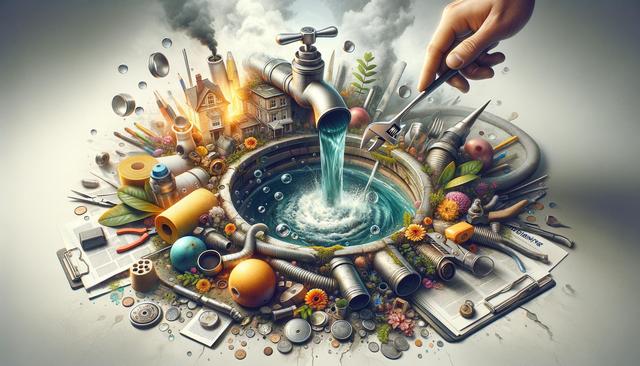Common Causes of Household Leaks
Leaks in the home can originate from a variety of sources, and understanding these causes is the first step toward effective leak repair. One of the most common culprits is aging or deteriorated plumbing. Over time, pipes can corrode, develop fractures, or shift due to temperature changes or settling foundations. Additionally, roof damage caused by storms, missing shingles, or clogged gutters can allow water to seep through and into the home. Appliances like dishwashers, water heaters, and washing machines may also leak due to worn-out seals or broken hoses.
Some less obvious causes include poor grading around the home, which directs water toward the foundation, and cracked exterior walls that let in moisture. Knowing where to look can help you identify potential issues before they escalate. Regular maintenance checks and awareness of areas prone to moisture buildup are crucial in preventing water damage.
Signs You Might Have a Leak
Even small leaks can lead to big problems when left unattended. Recognizing the early signs can prompt timely leak repair and prevent further damage. Some of the most noticeable indicators include:
- Unexpected increase in water bills
- Stains or discoloration on ceilings and walls
- Mildew or mold growth
- Musty odors in certain areas
- Warping floors or bubbling paint
In some cases, leaks may be hidden behind walls or under floors. Listening for dripping sounds and using moisture detectors can help identify these hidden issues. It’s important to take any sign seriously, even if it seems minor at first. Early detection is key to minimizing repair costs and avoiding long-term damage.
DIY Leak Repair vs. Hiring a Professional
When it comes to leak repair, homeowners often wonder whether they can tackle the issue themselves or if it’s better left to professionals. The answer depends on the severity and location of the leak. Small, accessible leaks, such as a dripping faucet or a loose pipe connection, can often be fixed with basic tools and materials like pipe tape or sealant. However, more complex issues—like leaks behind walls, in the roof, or within the foundation—typically require the expertise of a licensed plumber or contractor.
Attempting to fix major leaks without the proper knowledge can lead to further damage or even safety hazards. Professionals not only bring experience but also have access to specialized equipment like leak detection tools and infrared cameras. If you’re unsure of the source of the leak or the extent of the damage, it’s advisable to consult an expert to ensure a thorough and lasting repair.
Preventive Measures to Avoid Future Leaks
Preventing leaks is often more cost-effective than repairing them. There are several proactive steps homeowners can take to minimize the risk of water intrusion. Regularly inspecting plumbing fixtures, roofs, gutters, and appliances can help catch wear and tear before it turns into a leak. Replacing old pipes and worn-out washers is another way to ensure the longevity of your plumbing system.
Here are a few preventive tips:
- Install water leak detectors in key areas like the kitchen, bathroom, and basement
- Keep gutters and downspouts clear of debris
- Seal windows, doors, and cracks in the foundation
- Maintain proper grading around the home to direct water away from the structure
- Schedule annual plumbing inspections
These measures not only help prevent leaks but also contribute to the overall health and efficiency of your home. Investing time in routine maintenance can significantly reduce the likelihood of unexpected water damage.
What to Expect During a Professional Leak Repair
Hiring a professional for leak repair usually begins with a thorough inspection. The technician will assess the area, determine the source of the leak, and explain the necessary steps for repair. This process may include shutting off the water supply, removing damaged materials, and replacing or sealing the affected components. Depending on the location and severity of the leak, the repair could take anywhere from a few hours to several days.
Modern leak detection methods allow professionals to find leaks without causing excessive disruption to your home. Non-invasive techniques such as acoustic sensors and thermal imaging help pinpoint the issue accurately. After the repair is complete, it’s common for the contractor to offer advice on preventing future leaks and maintaining your system. Some may also provide warranties or service guarantees to give homeowners peace of mind.
Understanding what to expect during the repair process can make the experience less stressful. Being informed and asking questions ensures that the job is done correctly and helps you feel more confident in the work being performed.
Conclusion: Staying Ahead of Water Damage
Leak repair is an essential part of home maintenance that often goes overlooked until it’s too late. By staying vigilant and addressing issues early, homeowners can protect their property from costly damage and maintain a safe, healthy environment. Whether opting for DIY repairs or calling in a professional, taking action as soon as a leak is suspected is crucial. Regular inspections, preventive measures, and awareness of warning signs all contribute to a proactive approach that helps prevent small leaks from turning into big problems.




Leave a Reply